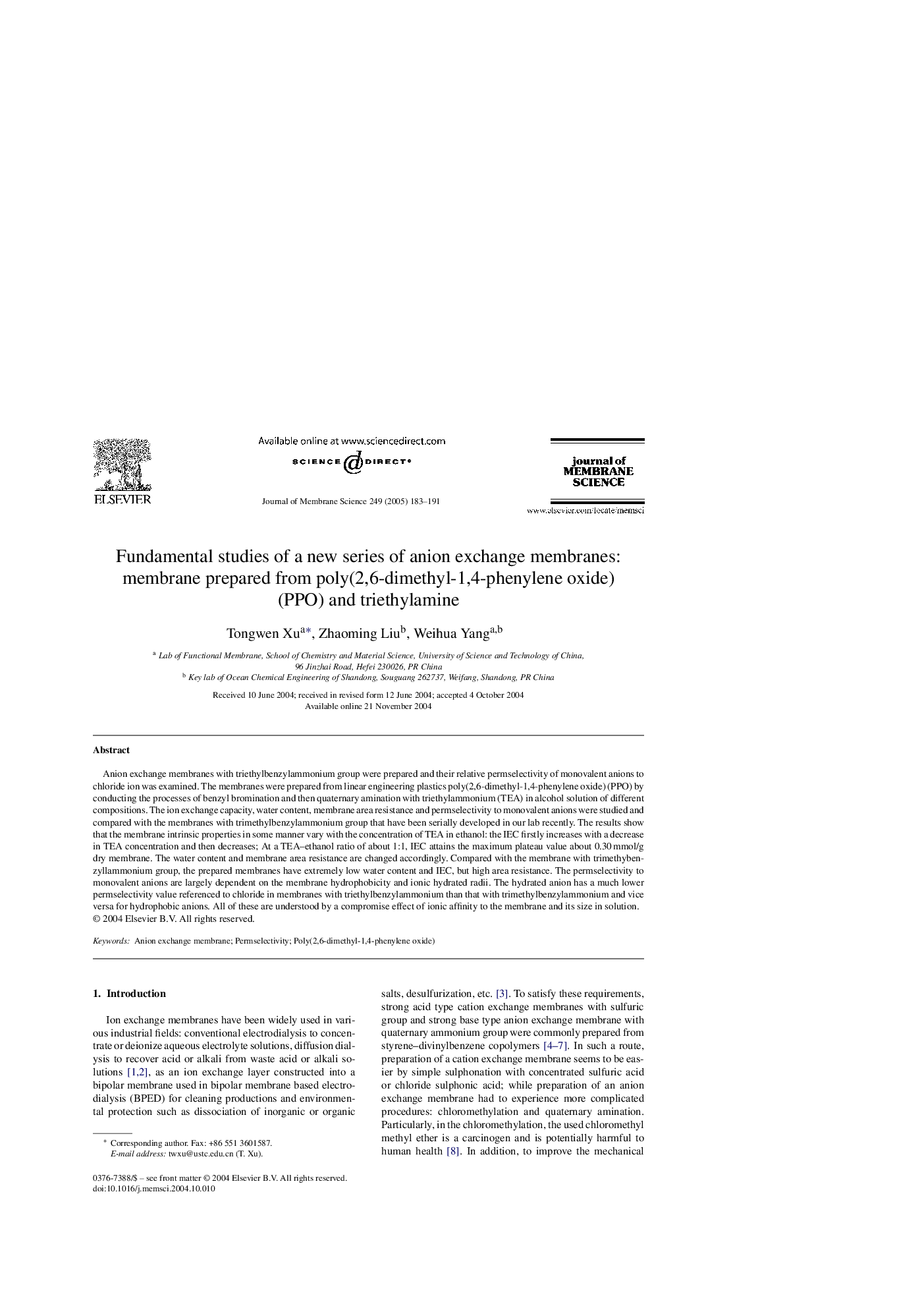| Article ID | Journal | Published Year | Pages | File Type |
|---|---|---|---|---|
| 9685057 | Journal of Membrane Science | 2005 | 9 Pages |
Abstract
Anion exchange membranes with triethylbenzylammonium group were prepared and their relative permselectivity of monovalent anions to chloride ion was examined. The membranes were prepared from linear engineering plastics poly(2,6-dimethyl-1,4-phenylene oxide) (PPO) by conducting the processes of benzyl bromination and then quaternary amination with triethylammonium (TEA) in alcohol solution of different compositions. The ion exchange capacity, water content, membrane area resistance and permselectivity to monovalent anions were studied and compared with the membranes with trimethylbenzylammonium group that have been serially developed in our lab recently. The results show that the membrane intrinsic properties in some manner vary with the concentration of TEA in ethanol: the IEC firstly increases with a decrease in TEA concentration and then decreases; At a TEA-ethanol ratio of about 1:1, IEC attains the maximum plateau value about 0.30Â mmol/g dry membrane. The water content and membrane area resistance are changed accordingly. Compared with the membrane with trimethybenzyllammonium group, the prepared membranes have extremely low water content and IEC, but high area resistance. The permselectivity to monovalent anions are largely dependent on the membrane hydrophobicity and ionic hydrated radii. The hydrated anion has a much lower permselectivity value referenced to chloride in membranes with triethylbenzylammonium than that with trimethylbenzylammonium and vice versa for hydrophobic anions. All of these are understood by a compromise effect of ionic affinity to the membrane and its size in solution.
Related Topics
Physical Sciences and Engineering
Chemical Engineering
Filtration and Separation
Authors
Tongwen Xua, Zhaoming Liub, Weihua Yanga,b,
